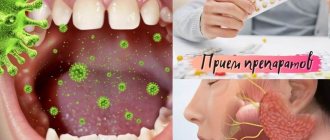History of salted tongue
In fact, no one knows for sure who came up with the idea of creating a new language. Everyone has heard of it at some point, and some have asked others how to speak salty language. Some people will wonder what purpose there is in learning a salty language if no one understands it. What's the point of this? That's the point! For children, this was a kind of secret way in which they could tell their friend anything, and the “uninitiated” would not even know what was being discussed. It would seem, why is it so complicated? You hear something familiar, but at the same time something incomprehensible. In addition, this is a good and very convenient way to train your brain and diction.
Some people mistakenly believe that the salty language belongs to the category of dialects. This is a completely false statement. It can rather be classified as a fictitious language or one artificially created on the basis of an existing one. Along with it, other fictitious languages, such as sand and brick, also gained popularity.
Instructions
Recipe for chickpeas with meat. Calorie, chemical composition and nutritional value
The name "gibberish" comes from the slang of traveling merchants - ophens. To hide their negotiations from the uninitiated who could overhear them, the Ofeni encrypted them by adding “tara” and “bara” before each syllable, alternately. For example, the phrase “Senya went to Moscow sounded like this: “Tarasebaranyatarapobarasheltaravbaramotaraskvu.” This simple encryption system was so successful that the word “gibberish” became in Russian
a designation for any unreadable nonsense.
Based on the ofenya principle, you can come up with many similar encryption systems. The simplest of them use only one code syllable, added before (or after) each syllable of the encrypted phrase. For example, if the code syllable is “bi,” then the well-known tongue twister takes the form: “Biebihal bigrebika bichebirez birebiku, bivibidit bigrebika bib birebike birak.” Bisubinul bigrebika birubika biv birebiku, birak biza birubika bigrebiku bitsap.
The brick language itself may have originated among students, but it and its variants have become widespread outside the school environment. Its principle is the doubling of each syllable with the replacement of consonants, that is, after each vowel in the coded phrase, a syllable is added with the same vowel, but the same code consonant. Greeting “Hello, how are you? turns after the “brick encryption” into “Zdokorokovoko, kakak dekelaka? .
This type of gibberish received the name "brick" perhaps from the fact that most often the code consonant is "k" - the first letter of the word "brick", and also because of the angular, "stumbling" nature of speech with such encoding.
Of course, instead of “k” you can use any other consonant. Sometimes such dialects receive their own names. For example, a brick tongue with the consonant “s” is called sunny or salty. However, such names cause some confusion, so it is better to consider all these variants as varieties of the same brick language.
Not all information should be available for public viewing. One of the ways to protect information is encryption, that is, the creation of a special algorithm that allows you to recode information into a form understandable only to some people.
The most primitive cipher is the use of auxiliary words or letters. As children, many people tried to speak in a made-up language, for example, adding the syllable “ma” after each vowel. This method only works during a conversation; others are unlikely to understand you. It is unlikely that it will be possible to encrypt written information in this way, since such an algorithm is easy to calculate.
Another children's cipher is the removal of any letters from a word. Most often, all vowels or every second letter are eliminated. So, for example, from the sentence “Come to visit” you can get “prkhd in gst”. It is not difficult to decipher without additional help.
Modern distribution of salt tongue
Even though salted tongue peaked in popularity back in the 1990s, many parents still remember it. They continue to pass this knowledge on to their children, and they, in turn, to their own. And those who do not know the rules of the salty language and have no idea how to speak it are happy to blow up the Internet with a request to teach them how to speak the salty language.
Source
The taste map of the language you learned in school is wrong | The science
Everyone has seen the tongue map - that little diagram of the tongue with the different parts neatly marked out for different taste buds. Sweet in the front, salty and sour on the sides, and bitter in the back.
This is perhaps the most recognizable symbol in the study of taste, but it is incorrect. In fact, it has been debunked by chemical scientists (people who study how organs such as the tongue respond to chemical stimuli).
The ability to taste sweet, salty, sour and bitter is not divided into different parts of the tongue. The receptors that detect these tastes are actually distributed everywhere. We have known this for a long time.
Still, you probably saw a map in school when you learned about taste. So where did this come from?
This familiar but not entirely correct map dates back to a 1901 paper by German scientist David P. Hoenig, Zur Psychophysik des Geschmackssinnes.
Henig set out to measure taste thresholds at the edges of the tongue (what he called the "taste belt") by dropping stimuli corresponding to salty, sweet, sour and bitter tastes at intervals along the edges of the tongue. ,
It's true that the tip and edges of the tongue are especially sensitive to tastes, as these areas contain many tiny sensory organs called taste buds.
Henig found that around the tongue there is some variation in how much stimulus is required to register a taste. Although his studies never tested the generally accepted fifth basic taste, umami (the savory taste of glutamate, as in MSG or MSG), Henig's hypothesis is generally supported . Different parts of the tongue have lower thresholds for certain tastes, but these differences are fairly minor.
The problem is not Hoenig's conclusions. This is how he chose to present this information. When Henig published his results, he included a line graph of his measurements. The graph shows the relative change in sensitivity of each taste from one point to another, not in relation to other tastes.
Taste map: 1. Bitter 2. Sour 3. Salt 4. Sweet. (MesserWoland via Wikimedia Commons, CC BY-SA)
It was more of an artistic interpretation of his measurements than an exact representation of them. And it made it seem like different parts of the tongue were responsible for different tastes, rather than showing that some parts of the tongue were slightly more sensitive to certain tastes than others.
But this clever interpretation still leaves us confused about the taste map. For this we need to turn to Edwin J. Borin. In the 1940s, this graph was reinterpreted by Harvard psychology professor Boring in his book Sensation and Perception in the History of Experimental Psychology.
Version
Boring also did not have a meaningful scale, resulting in the most sensitive area of each taste being divided into what we now know as a tongue map.
In the decades since the language map was created, many researchers have refuted it.
Indeed, the results of a number of experiments show that all areas of the mouth containing taste buds, including several parts of the tongue, the soft palate (on the roof of the mouth), and the throat, are sensitive to all tastes.
Our understanding of how taste information is transmitted from the tongue to the brain shows that individual taste qualities are not limited to any one region of the tongue. Two cranial nerves are responsible for the perception of taste in different parts of the tongue: the lingopharyngeal nerve behind and the chorda tympani of the facial nerve in front. If tastes were exclusive to their respective areas, then, for example, damage to the chorda tympani would deprive a person of the ability to taste sweet tastes.
In 1965, surgeon T. R. Bull found that patients who had their chorda tympani cut during medical procedures also reported no loss of taste. And in 1993, Linda Bartoshuk of the University of Florida discovered that by applying anesthesia to the chordae nerve of the tympanic membrane, subjects not only could taste sweetness, but could taste it even more strongly.
Modern molecular biology also argues against the language map. Over the past 15 years, researchers have identified many receptor proteins found on taste cells in the mouth that are critical for detecting taste molecules.
For example, we now know that anything we perceive as sweet can activate the same receptor, while bitter compounds activate a completely different type of receptor.
If the map of the tongue were correct, you would expect sweet receptors to be located on the front of the tongue and bitter receptors to the back. But this is not the case. Rather, each type of receptor is found in all taste zones in the mouth.
Despite the scientific evidence, the tongue map has become common knowledge and is still taught in many classrooms and textbooks.
However, the real test does not require a laboratory. Brew a cup of coffee. Hack the soda. Touch the tip of your tongue with a pretzel. In any test, it is clear that the tongue can take these flavors everywhere.
This article was originally published on The Conversation.
Stephen D. Munger, associate director of the Center for Smell and Taste; Professor of Pharmacology and Therapeutics at the University of Florida. This piece was co-authored by Drew Wilson, communications specialist at the University of Florida Center for Smell and Taste.
,
Learning salty language
Zlata Zakharova post pinned
Liza Bazhanova post pinned
Radmila Selimova post pinned
Diana Polyakov's post pinned
Alexey Ivanov pinned post
Vadim Ladonin pinned post
Karvatska Vika post pinned
Krch, I wondered what would happen if I translated the song into salty language. This is what happened (Song I got sick and went away)
Dasa posodasalshese everything went wrong with Posobosoleseloso isi proshoshloso Ktoso rasassasazheset oso lyusubvisi Show in full. In the side-haired one, he hides tightly
Where are all the special people, asa where are all the bosol? Everything will happen sasamoso sosobosoy Kasak nasa rasanus sysypasat sosol Vesed rasanisiloso kneading with streselbosoy
Dasa posodasalshese everything went wrong with Posobosoloseloso isi prosholoso Whoso rasaskasazheset oso lyusubvisi In kosotosorosoy hides teseploso
Where are all the people, Asa, where are all the bosol? Everything will happen sasamoso sosobosoy Kasak nasa rasanus sysypasat sosol Vesed rasanisiloso kneading with streselbosoy
Yasya brosozhusu poso usulisitsasam osodisin To chesertus esetosot kasarasantisin Yasya bosolesen tosobosoy bysyl Rasasstreselyalasa mosoy tysyl, nasahosodisilasa prisichisin
Dasabysy us nese besyt vmesestese Tisipasa, tesebese soso mnosoy stasaloso tesesnoso Osa, slosozhnoso besyt osodnosomu Vrosodese isi mesestasa sesebese nese nasahosozhusu, dasa, dasa
Dasa, dasa, dasa, boasts of mnesa vrasat
I’m too lazy to write further (Yes, I’m too lazy to write)
Source
No duplicates found
How to quickly increase blood pressure at home?
Additional clarification for doubters:
The difference in taste greatly depends on the time of salting, as well as on all sorts of other little things, such as whether you held your tongue under a load and whether you added saltpeter. If, for example, you do not keep it under load, then there will be little brine and the product will taste slightly different than the one originally intended.
And the last note, the salt should really be coarse, but there is no point in selecting only large pieces for salting. Fine salt dissolves quickly and immediately salts the outer part of the product, making it difficult for the brine to penetrate into the middle. Coarse salt dissolves slowly and salts the product more evenly.
Each of us had our own fun in childhood. Some played balls in the yard for days on end, some jumped from swings into the sand, some played “Edible - Inedible,” but, of course, everyone wanted to be special and unique in some way. There was an art to saying something so that only a friend could understand. This gave the moment some mystery. The salty language became just such a means of communication. So what is it?
The history of the photograph “The Dying Kiss”
Remember Nikita “Besogon” Mikhalkov’s film “Burnt by the Sun 2: Imminent” and its loud episode with “show your tits”
?
Indeed, there was something similar, but much more chaste. And this happened during the Sino-Vietnamese War
.
During the Vietnam War, a mortally wounded Chinese soldier in the 139th Infantry Division whispered to a nurse leaning over him that he would turn 19 this year.
He always studied hard and then worked hard to help his parents, so he never had a lover and never even dared to talk to a girl. Now he is dying.
Can he count on a farewell kiss from the nurse?
With tears in her eyes, the girl raised the head of the soldier lying in front of her and kissed him. A couple of minutes later the soldier died. This kiss became the only and last female kiss in his life.
War reporter Wang Hong accidentally saw this scene, he took the camera and filmed this touching moment!
The situation actually happened in reality. The nurse's name was Zhang Ru. She went through the war and after it joined the party. Zhang Ru is still alive. The dead soldier's name was Zhao Weijun.
In 2015, Zhang Ru visited Zhao Weijun's grave, looked at the tombstone and burst into tears and said:
Acupressure
You can fight low blood pressure not only by taking certain types of food, drinks or medications. Correctly performed acupressure massage, which you can do yourself, has proven effectiveness. Light massage movements from top to bottom should be done in the area of the carotid artery. Strong pressure in the central part of the back of the head and massaging the point at the base of the skull with your thumbs also help. Alternatively, you can have someone massage your shoulders.
All the methods described above are simple and effective; they can be used to easily lower blood pressure at home. But in order to encounter the problem of hypotension less often or to avoid it completely, it is advisable to lead a correct lifestyle: spend more time in the fresh air, do exercises in the morning, make sure that your daily diet includes meat products, get a good night’s sleep, take a contrast shower with intensive rubbing with a washcloth.
News aggregator 24SMI
News Media2
Back Next
April 4, 1856 (165 years ago) began the adventures of the rarest stamp in the world
The stamp of the colony of British Guiana was handcrafted in a printing house in 1 copy.
The octagonal "British Rose Guiana" is printed in black on red and is not perforated. In the center is a three-masted schooner. Around it is the colony's motto in Latin, Damus Petimus Que Vicissim (“We give and hope to receive”).
In 1873, a 12-year-old schoolboy found an envelope with a stamp at home and steamed it. For 6 shillings ($1.5) he sold it to a neighbor.
In 1997, he was sentenced to 30 years for the murder of Olympic champion Dave Schultz. John was in prison until his death in 2010.
Associated symptoms and what they indicate
By looking at various accompanying symptoms, you can understand what is happening to the body and how serious it is. It should be remembered that self-diagnosis does not give a comprehensive result - its task is to determine how urgently you need to see a doctor, or whether the problem can be solved on your own
In any case, in emergency conditions, an unpleasant taste is the last thing the patient pays attention to
If this symptom worries the patient, it means there is time for self-diagnosis.
| Symptom | What is he talking about? |
| The taste is constant | This situation occurs when there are problems in the oral cavity or neighboring organs, and the process is chronic. The constant flow of blood, mucus, tear fluid or pus creates unpleasant sensations. The same situation occurs with abuse of salty foods, alcohol and dehydration. |
| Taste appears in the morning after eating | This is due to the characteristics of the products. Smoked meats and pickles for breakfast create a lasting aftertaste for a long time. Coffee or strong tea can have the same effect due to dehydration. |
| Taste in the morning | This may be a reaction to dental care products. More serious causes are stomach pathologies that cause reflux of contents, belching, and heartburn. In this case, the symptom appears in the early morning when the patient wakes up. |
| Salty saliva | This symptom is observed with dehydration, excess salty foods, pathologies of the salivary glands, kidney diseases, and diabetes. |
| The taste of salt on my lips | Associated with inflammation, damage to the lip mucosa, excessive sweating, allergies, and lacrimation. |
| Salty teeth feeling | Occurs when hygiene standards are violated - this is the taste of mineralized plaque. |
| Sweet-salty taste | Appears with dehydration, pregnancy, chronic inflammatory processes, and sometimes bleeding. Often not related to the sugar content of substances that enter saliva. |
| Bitter salty taste | Occurs with pathologies of the salivary glands, pyloric diseases, gastritis, gastric ulcers, kidney diseases, diabetes, poisoning. |
| Sour-salty taste | Associated with GERD, damage to the esophagus, poor hygiene, and dehydration. |
| Food seems salty | This effect occurs with a combination of dehydration and insufficiently moist food, and mental illness. |
| A cough appears | A sign of an inflammatory process in the throat, severe dehydration (cough when swallowing). |
Taking medications can cause any shade of salty taste - this is an individual reaction. If the discomfort is very disturbing, or other symptoms appear, you should consult a doctor - you may need to find another remedy or change the dosage.
The Man from Tollund
In 1950, in the peat bogs near the village of Tollund, brothers Emil and Viggo Hoygaard (along with Grete, Viggo's wife) came across a corpse. Believing that the deceased was the victim of a recent murder, they called the police. The investigation showed that the man was indeed killed - about 2300 years ago..
Causes of salty taste
It is imperative to find out the cause of the taste of salt in the mouth in order to begin treatment in a timely manner.
Various factors can cause this annoying phenomenon.
People who prefer strong tea and coffee often experience a salty taste in the mouth, since these drinks are considered diuretics and cause increased urination, which gradually causes hidden dehydration.
Not everyone adheres to the daily consumption of 1.5-2 liters of clean fresh water; they drink a maximum of 2-3 glasses of water in the summer heat. As you know, in the human body, due to a lack of water, the blood thickens and saliva acquires a salty taste.
Dehydration in people usually occurs:
- in summer on a hot day;
- with uncontrollable vomiting or diarrhea;
- after performing heavy physical work;
- with toxicosis in pregnant women.
An inflammatory process in the salivary glands behind the ear can cause this symptom. Under the influence of pathogenic bacteria penetrating from the lymph nodes into the gland ducts, from the tissues of the oral cavity affected by stomatitis, the salivary glands become inflamed. An increase in salivation appears, and a person feels discomfort from the bitter salty taste.
Very rarely, stones may be found in the salivary ducts, which can cause a salty taste in the mouth, excruciating pain from swelling behind the ears, and pain when swallowing saliva and food.
The use of certain medications or local anesthesia during tooth extraction can provoke a change in the chemical composition of saliva; after such procedures it feels saltier.
ENT diseases sometimes cause a salty taste. With sinusitis, inflammation of the mucous membrane of the paranasal sinuses occurs with copious secretion of thick mucus, which gets into the throat and can cause saltiness in the mouth.
Read: Tooth enamel - why it is destroyed, how to preserve and strengthen it
The focus of the inflammatory process caused by sinusitis is located in the maxillary sinus in the nose area, behind the cheeks. During inflammation, thick greenish mucus with a salty taste is released.
In patients with acute respiratory diseases, tonsillitis, tracheitis, laryngitis and sore throat, there is the release of sputum and mucus, which has an unpleasant salty taste.
When the pylorus of the stomach is insufficient, hydrochloric acid enters the stomach, for this reason, after the morning meal, bitterness and a salty taste are felt.
Among women
Due to hormonal changes, a woman may experience an unusual taste in her mouth.
In an interesting situation, the representatives of the fair half of humanity undergo a complete restructuring of their bodies to ensure normal intrauterine development of the fetus.
Hormonal changes cause a change in the functioning of taste buds: a pregnant woman is drawn to salted fish, cucumbers, sauerkraut - this is not the whims of female nature, but thus the taste perception changes, which is scientifically called dysgeusia.
Due to increased activity of taste buds, some pregnant women suffer from a salty taste in the mouth and constant toxicosis. There is nothing wrong with this, this phenomenon is considered temporary, and after childbirth the unpleasant aftertaste will disappear.
In men
Alcohol and smoking can cause a bad taste in the mouth
Representatives of the stronger sex, who often drink a glass of alcohol, note a bitterness with a salty taste in the mouth.
Smoking and excessive consumption of alcoholic beverages cause dehydration.
If a person has been in an uncomfortable position for a long time, this negatively affects the activity of the brain, causing dysfunction in the functioning of important organs, reflected by the appearance of a salty taste in the mouth.
Mundaneum: Information overload that killed the predecessor of the Internet
In the twentieth century, humanity moved from the idea of preserving information to the idea of its maximum accessibility. The first project designed to make the information accumulated over centuries accessible to everyone was Mundaneum. He is called the forerunner of the Internet, but in the age of the Internet, few people remember him.
The founders of modern document science, Paul Otlet and Henri Lafontaine, wanted to create a huge repository that would house all the knowledge about the world collected by humanity. They called their project Mundaneum. Over several decades, Otlet and Lafontaine collected more than 12 million documents and cards, but the more documents settled in the Mundaneum archives, the closer its collapse was. In fact, the project exhausted itself in 1934 - and precisely because it turned out to be more than successful. Today, “Mundaneum” is interesting not only as a part of cultural heritage, but also as a reason to think about what is fraught with an avalanche-like increase in information.
Why the project was based in the Belgian capital
The meaning of the life of the Belgian Paul Otlet was the systematization and classification of information carriers. At the age of 24, he wrote an essay in which he questioned the well-known thesis about the book as the main source of knowledge. The main source of knowledge should be cards: one card - one piece of information. 3 years after writing the essay, Otlet, together with his friend and like-minded person Lafontaine, organized the world's first International Institute of Bibliography. At the same time, in 1895, Otlet conceived an even more ambitious project.
This was not about a library or an archive, even a very large one. Otlet and his like-minded people wanted not only to collect all the information in the world, but to make it accessible to anyone anywhere in the world. With the help of Mundaneum, a farmer from Australia or an applicant from Chile could receive the information they needed about pest control or enrolling in European universities without leaving home. Something very familiar, isn't it?
The idea seemed worthwhile to the Belgian government. In 1910, Otlet and Lafontente were given funds and premises in Brussels to create the Mundaneum. Just 10 years later, the volume of collected documents amazed the imagination of contemporaries: in addition to the mentioned 12 million cards, the Mundaneum stored 200 thousand newspapers published in 1895–1914, as well as hundreds of thousands of posters, postcards and photographs. To systematize and organize information, Otlet used the universal decimal classification he developed.
-The founder of Mundaneum, Paul Otlet, believed that cards should become the main source of knowledge. One card - one piece of information -
The day came when the creators of Mundaneum recognized it as ready to fulfill its main mission: providing any information to everyone. Letters and telegrams with requests flew from all over the planet to Brussels. Repository employees sorted them, then looked for the necessary information in internal help systems, then retyped it and sent it to the authors of the requests.
While there were few letters, there were no problems finding information. But when the number of requests increased to 1,500 per year, the system began to malfunction. The increase in staff did not yield anything: after all, Mundaneum employees not only searched for information based on requests, but also continuously accepted and cataloged more and more new documents. Otlet realized that paper media were outdated, they were too bulky and inconvenient, and it was time for humanity to look for something new.
In 1934 he wrote an amazing book called Monde: it describes a system of “telebooks” or “radio libraries”. In this library there will be screens on the tables, librarians will sit behind the screens and display the necessary information on the screens, and then send it to readers via a single telecommunications network. Otlet was not clairvoyant: work on the first computers was in full swing in laboratories in the USA and Germany. He was only ahead of his time by some 50 years, but his foresight did not save Mundaneum. The repository was choked with requests and documents: the idea was great, but the technical capabilities to implement it turned out to be insufficient.
-Otle realized that paper storage media are outdated, they are too bulky and inconvenient, and it’s time for humanity to look for something new-
Oblivion and resurrection
Gradually, the Belgian government became disillusioned with Mundaneum and cut funding. Work with requests had to be stopped, but a handful of employees, led by the elderly Otlet, continued to develop the project until 1939, when German troops invaded the country. The Nazis took all 12 million cards, collections of newspapers and photographs to a vacant lot and burned them, and opened an exhibition of art of the Third Reich in the premises. Otlet could do nothing to stop them. He died in 1944, broken and forgotten by everyone.
The remains of Mundaneum were gathering dust in one of the premises of the University of Brussels until Worden Boyd Rayward, the author of a dissertation on P. Otl, became interested in them. With his light hand, Otlet's project returned to the people - already in the form of a museum in the city of Mons, where visitors can see many boxes with cards.
-In the book “Monde” Otlet put forward the idea of “telebooks” or “radio libraries”. He did not suspect that in 1934 Germany and the United States began secret development of a computer-
Heirs and successors
At the beginning of the 21st century, Otle's ideas were picked up by the Wikimedia Foundation, founded by Jimmy Wales. His projects, and above all Wikipedia, are known to everyone, and the educational and educational orientation makes us recall another project of the Belgian scientist - “World City”. In this city, scientists from dozens of institutions were expected to work together and spread knowledge. The "World City" was never built, but today we have its electronic equivalents.
Humanity has learned to instantly retrieve information from virtual storage and has found itself faced with a strange paradox: an excess of information leads first to its overvaluation, and then to its depreciation. One of the ways to avoid depreciation is to develop a main vector for the development of information civilization. In this regard, projects like the Wikimedia Foundation are irreplaceable: they not only provide us with information, but also remind us why we need it.
Symmetric ciphers
Meringue recipe with sweetener. Calorie, chemical composition and nutritional value
In another way they are called symmetric cryptosystems. The peculiarity of this encryption method is that the same key is used for encryption and decryption. The algorithm must be agreed upon by the parties in advance.
One of the most common methods of such encryption is to write text not horizontally, but vertically. Composed with fixed height and variable length. The necessary information is recorded vertically. As it reaches a certain value, it is transferred to the next column. Then the table is removed, and the resulting cipher is sent to the second party. To decrypt, it is enough to know the height of the table.
If the information is very valuable and needs to be encrypted more carefully, you can use double permutation. That is, the previous method is repeated again with a change in the height of the table. In addition, in the second table you can use rows rather than columns, this will only complicate decoding. Some encrypt records in a zigzag, diagonal, or spiral pattern.
Asymmetric ciphers are those whose key is known in advance. Mainly used on the Internet. For example, digital signatures operate using asymmetric cryptosystems.
The catchphrase “Columbus egg”
Everyone knows about the “Gordian Knot” and how famously Alexander the Great dealt with it (for LL: there was a prophecy that the one who could untangle the cunningly tied knot would rule Asia. No one could untie it. Sasha cut it).
But there is another funny legend about how to deftly get out of a difficult situation (which is still relevant today because it even sharply resembles dialogues on Pikabu).
Our hero, who would have thought Columbus (the same one, Christopher)
.
One day he had the honor of dining with Cardinal Mendoza (a Spanish cardinal of such power that he was called the “great cardinal” or “little pope”). There he told in vivid colors how he discovered America.
One of those present said something like:
-What could be easier than discovering a new land?
And the navigator offered him a simple riddle: how to place an egg vertically?
Neither the questioner nor anyone else present could do this, no matter how hard they tried. Then Columbus, smiling, took the egg, broke it at one end and put it on the table, showing that it really was simple. Seeing this, everyone protested, saying that they could do it too. To which Columbus replied:
-The difference is, gentlemen, that you could do it, but I actually did it.
This legend is known in different variations both before and after Columbus, but it went down in history with his name.
Subscribe, with us you will learn many different interesting and educational facts about world history.
Treatment
Shrimp wok recipe.
calorie content, chemical composition and nutritional value How to treat glossitis? - you ask. There are so many reasons! And indeed it is. But! While the doctor is looking for the true cause of glossitis, he will definitely help you to more easily endure these painful and unpleasant symptoms.
For any type of glossitis, it is very important to reduce irritation of the tongue mucosa, which means reducing the amount of spicy, salty, fried, smoked foods, and sharply sour foods in the diet. It is also advisable to avoid large amounts of refined sugars - they are a breeding ground for fungi
Gentle nutrition also applies to drinks: excessively hot or cold drinks, alcoholic drinks, and sour juices can also further damage the mucous membrane.
If plaque occurs, there is no need to try to scrape it off. This further injures the tongue. For candidal glossitis, you can rinse your mouth and gently rub your tongue with gauze soaked in a weak soda solution.
Drugs
If glossitis is an independent disease, then first of all you need to eliminate the cause of glossitis: with infectious glossitis, these are viruses, bacteria and fungi. For this purpose, antiseptic and antifungal solutions, soothing and anti-inflammatory herbal infusions are used.
If glossitis is a manifestation of another disease, then until it is cured, glossitis will not go away either. Therefore, eliminating vitamin deficiency and treating gastrointestinal diseases will be the main therapy for glossitis.
7 Tips on How to Speak English Fluently
Learning to speak English fluently, confidently and naturally is an achievable goal. Every English language learner is different, but there are some easy ways to improve in a fairly short period of time.
Learning English, but in a hurry? Try a lesson on Busuu today - it's fun, free and effective.
7 Tips on How to Speak English Fluently and Confidently
Don't be afraid to make mistakes
Your goal is to deliver the message, not to speak perfect English, with correct grammar and vocabulary. Even native English speakers make mistakes!
Practice, practice, practice
Practice makes perfect. Always look for opportunities to test your spoken English. For example, Busuu's conversations feature makes it easy to speak English and get feedback from native speakers around the world.
Listen
The more you hear, the easier it will be for you to speak English better. You will begin to speak more fluently and confidently in conversation, and learn to express your opinions in English using new expressions and idioms.
solar
Translation:
Aya, oh1
.
kunnің ; — solar
eclipse Kun Tutylu;
— solar
heat Kunnің ystygy;
— sun
bath Kүn saulesi bath sy;
2
.
( filled with the light of the sun
) shuak, kungey, kun tusetin;
- sunny
day shuak kun;
— sun
room kungey bolme;
3
.
trans.
(
jubilant
) zhaima shuak;
— sunny
mood zhaima shuak, konil kuyi zhaidary;
- sunstroke
honey
. Kun otu, Kun otip ketu, kunsip kalu;
— sundial
kun sagaty;
— solar
system Kun zhuyesi
Russian-Kyrgyz dictionary








